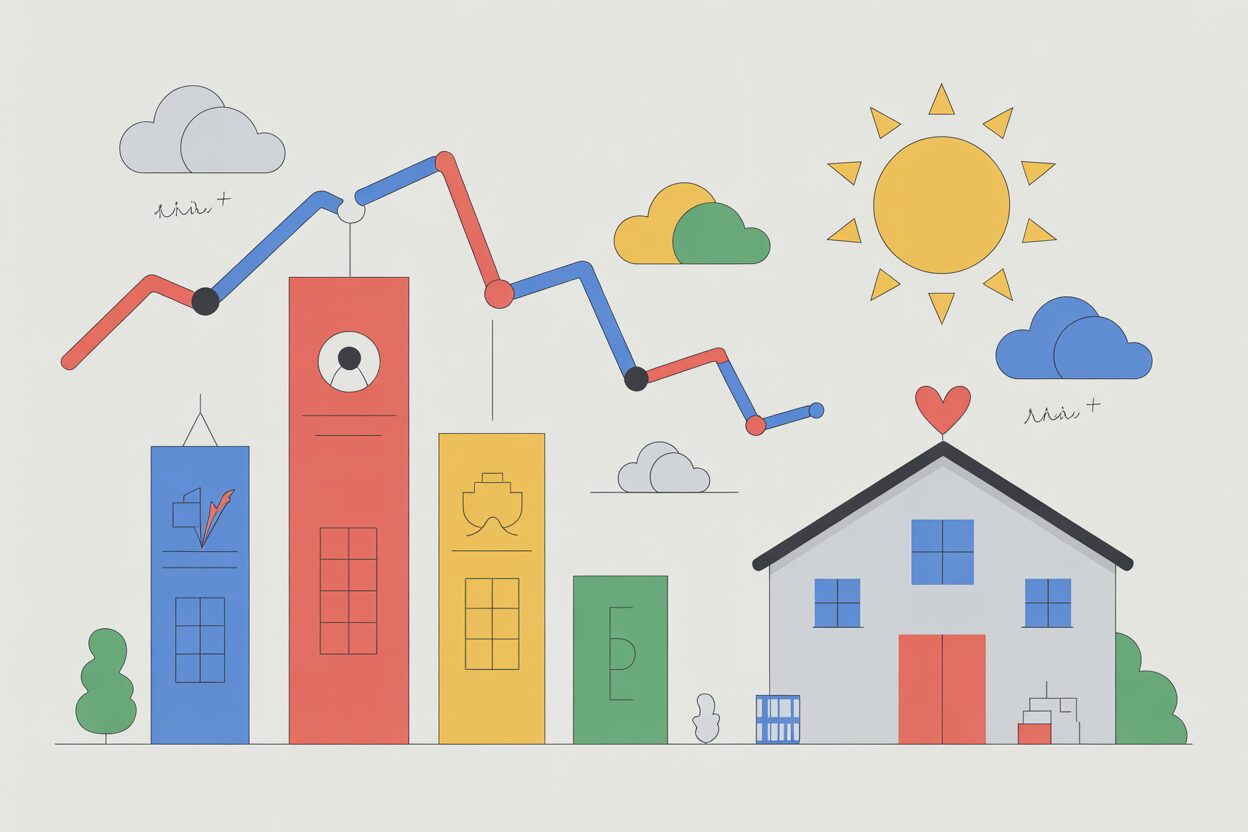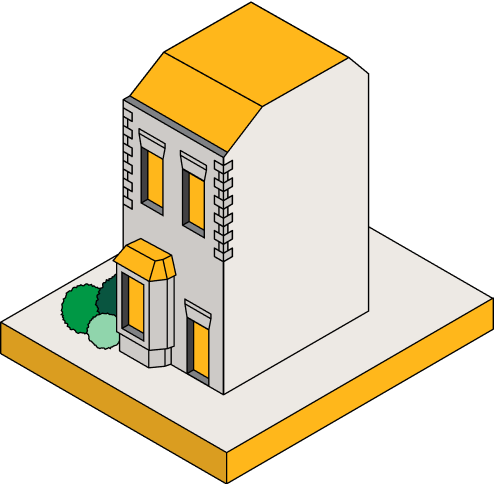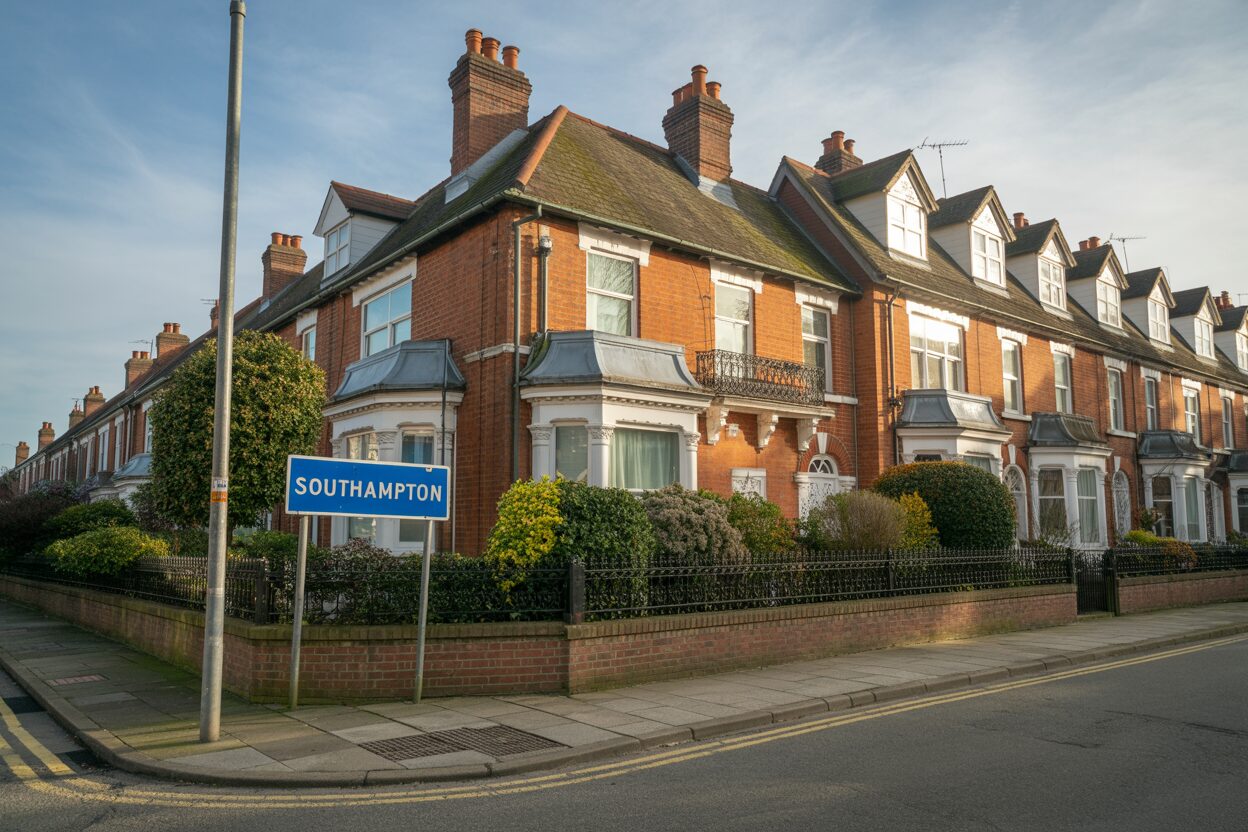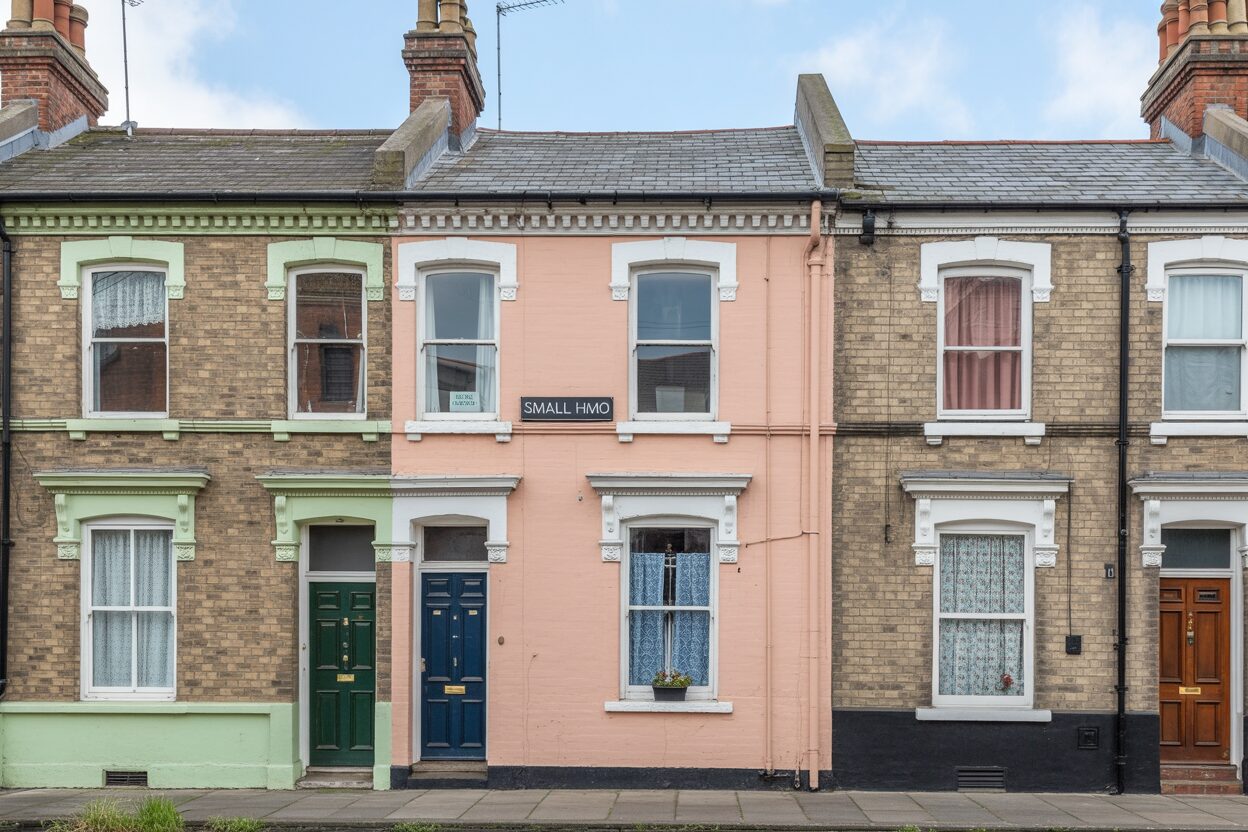
Rental yield shows you how much money you earn from a buy-to-let, HMO or holiday cottage each year compared with today’s property prices. The value of working out rental yields is that you can compare different investment property opportunities and spot the best deals to build up your portfolio.
In this article, learn how to calculate rental yield and how to use it to make better property investment decisions.
What rental yield is
Rental yield tells you how much income a rental property generates for you compared to its current market value. Property investors use yield to determine if the income from a property supports its price and level of risk.
There are three ways to calculate rental yield:
- Gross rental yield (gross yield): This is your rental income before costs.
- Net rental yield (net yield): This is your rental income after costs.
- Cash-on-cash return: This is your return after mortgage payments and finance costs, based on the cash you put in.
4 reasons why rental yield matters
Rental yield is a way of checking that you’re getting a high enough return from a buy to let, house in multiple occupation (HMO) or holiday cottage.
You can use yield to:
1. Compare postcodes and regions
Start by pulling property prices and monthly rent for similar properties like 2-bed flats in multiple neighbouring districts.
Work out the gross rental yield for each and if there’s an area that pulls one or two points higher, that might be an investment opportunity.
2. Work out potential rental prices
This is a way of assessing a local property market to see if your target rent is realistic in today’s local market. Pick three to five recent lets within a mile.
Adjust rental prices to reflect the size, condition or whether the rent includes bills. Write down the adjusted monthly incomes from high to low.
If you target rent is higher than the second highest rent, you either need to trim it or improve the property in such a way that it justifies the extra price.
3. Calculate net rental income
List all of your expenses one by one, like management, maintenance, cleaning, compliance, insurance, ground rent, service charge, voids and licence fees. Don’t include other buying costs like stamp duty, legal, survey, mortgage fees or refurbishment.
Add them together. Then, calculate net rental yield using the formula later in this article.
The value of net rental income that that while the yield can look great, this metric tells you how many pounds are left after running costs. That’s the money you’ve actually got to pay the mortgage, taxes and yourself. It’s the difference between a deal that works and one that drains cash.
4. Pass lender tests
Lenders want your buy-to-let, holiday cottage or HMO mortgage to cover your monthly payments to them. They want a headway of 25% to 45% above your mortgage repayments.
Here’s a worked example to show you how to use lender tests to work out if a property investment you’re interested in would qualify for a mortgage.
| Step | What you do | Calculation | Result |
| 1 | Start with the property purchase price | — | £250,000 |
| 2 | Work out the mortgage (75% LTV) | 0.75 × £250,000 | £187,500 loan |
| 3 | Get your deposit (equity) | £250,000 − £187,500 | £62,500 deposit |
| 4 | Calculate stressed annual interest rate | £187,500 × 7% | £13,125 interest/year |
| 5 | Note the annual rent | — | £15,600 rent/year |
| 6 | Test Interest Cover Ratio (ICR) | £15,600 ÷ £13,125 | 1.19 (119%) |
| 7 | Compare to lender minimum | Need a minimum of 125% | Fails. Negotiate down the price, charge higher rent or pay a bigger deposit |
How to work out rental yield: step by step
Here’s how to work out rental yield in three stages—gross, net, and cash-on-cash. Always use current figures, not the historic property purchase price.
Step 1: gross rental yield
Start with gross rental yield. It’s simple and quick.
The formula is:
(monthly rent × 12) ÷ property value × 100
Here’s a worked example
- Property value = £250,000
- Monthly rental income = £1,300
- Annual rental income = £15,600
- Gross rental yield percentage = (15,600 ÷ 250,000) × 100 = 6.24%
Remember to factor in seasonality into your calculations on total annual rental income. On a standard buy-to-let property, 6.24% would be an average rental yield. A good rental yield percentage would be closer to 9% which you can achieve in some parts of the UK.
Step 2: net rental yield (before finance costs)
Now calculate net yield to get a more accurate picture of the property’s performance.
In this, you include the following:
- Agency fees
- Maintenance costs
- Landlord insurance
- Council tax (if you pay it and not your tenants)
- Ground rent and service charge (for a leasehold property)
- Annual expenses like cleaning, compliance and testing, utilities (if you pay them and not your tenants) and voids
- You can include some capex costs for big items like boiler replacements for a fully loaded net yield but most landlords don’t because they’re irregular, one-off spends.
The formula is:
(annual rent − annual costs) ÷ property value × 100
Here’s a worked example where the tenant pays the utilities and council tax and you pay ground rent on a leasehold property:
- Property value: £250,000
- Monthly rent: £1,300 → annual rent £15,600
Your itemised annual costs are:
- Management (12% of rent): £1,872
- Maintenance: £780
- Landlord insurance: £250
- Council tax (you don’t pay on this let): £0
- Ground rent + service charge: £1,500
- Cleaning: £300
- Compliance/testing: £400
- Voids (2 weeks at £300/week): £600
- Utilities (tenant pays): £0
Your total annual costs are £5,702. Your net rental income before finance is £9,898. Divide the net income by the property value and you get 3.96% net rental yield.
This percentage shows what the property would earn after running costs, before mortgage payments, so you get a much clearer picture on likely performance. It’s a clearer read on actual performance. If it’s not as high as you want, you need to raise the rent, find ways to cut the costs, or offer the seller less.
HMO Architects note: Don’t include buying costs like legal fees, survey fees, mortgage fees, stamp duty, refurbishment costs when working out net rental yield.
Step 3: cash-on-cash return
Use this to assess the return on your actual cash invested. This calculation factors in mortgage interest and your cash in.
The formula is:
(annual net income before finance − mortgage payments) ÷ total cash in × 100
Here’s a worked example on a typical HMO investment:
- Type: 6-bed HMO (multiple occupation)
- Property value: £360,000
- Monthly rent per room: £650
- Monthly total rent: £3,900
- Annual total rent: £46,800
- Annual costs (bills-included): £9,000 (includes licence, cleaning, safety works, management fees, and council tax)
- Gross rental yield: £46,800 ÷ £360,000 × 100 = 13.0% gross yield
- Net rental yield: (£46,800 − £9,000) ÷ £360,000 × 100 = 10.5% net yield
In this case, this is how you work out the cash-on-cash return:
- Say you put in £90,000 cash (deposit + legal + fees)
- Mortgage payments = £1,200/month = £14,400/year
- Net after finance = £46,800 (annual rental) − £9,000 (annual costs) − £14,400 (annual mortgage payments) = £23,400
- Cash-on-cash = (£23,400 ÷ £90,000) × 100 = 26.0%
Think of it as your cash flow nest egg after one year of ownership. In this case, not accounting for tax, you’d be £23,000 up. That’s £23,000 you could draw as income through a limited company or you could put aside to purchase your next property.
If it provides the cash you want and meets the mortgage lender tests, this could be a good deal.
HMO Architects: maximise your property’s performance with us
Working out rental yield isn’t just about getting a number. It’s about understanding what that number means for your money, your time, and your risk. Once you know how to break the calculation down, you can make better investment decisions without needing a finance degree.
Here are three recent projects where HMO Architect clients maximise rental yield and more:
- Durward Street, London (5 units): We re-planned a mid-terrace C3 house into a flexible five-bed C4 HMO, pushing the property’s value up from £650,000 to £1.2m. The rent saw a significant increase to, increasing from £350 pcm to £2,500 pcm.
- Flat 107, London (4 units): We converted a conservation-area maisonette above a print shop into a four-bed HMO. Our architects successfully blended modern styles and amenities with the building’s cherished heritage features and gave every room an en-suite wet room. Result: property value up from £550,000 to £950,000 and £57,600 annual rent.
- South Bank Road, Liverpool (6 units): We took a run-down terrace back to brick, added rear and dormer extensions, and delivered two en-suites plus two shared bathrooms. The scheme lifted value from £85,000 to £280,000 and rent from £550 pcm to £2,800 pcm—a transformation that turned a poor asset into strong cash flow.
We provide a start-to-finish service for clients, including:
- Investment strategy call: Speak to Ryan Windsor, our Investment Director, about building a property portfolio. Ryan Windsor was 17 when he began building his own extensive property portfolio. Ask him about his BRRR method and how to use it as your investment strategy.
- Feasibility studies: Seen a single property you want to turn into a holiday let? Speak to Giovanni Patania, our Architecture Director. Get his expert feedback on and approach to pre-buy and design feasibility issues related to a property purchase you have in mind.
- Architectural services: Our team of architects has extensive holiday let experience. Let them create amazing spaces that maximise guest comfort without compromising your yield.
- Interior design: Balance aesthetics and durability to create stylish spaces that attract bookings while standing up to heavy guest use.
- On-site management: We can act as your Building Regulations Principal Designer (where required) to keep your holiday let project on track.
- Professional network: Access a range of brokers, lenders, surveyors and other experts to deliver your project on time and within budget.
View our range of development finance case studies to see how we’ve helped clients turn their ideas into sound investments. Read customer stories on HMO, flat, holiday let and housing projects.Call us on 01223 776 997 or email us directly.
Ryan Windsor, Development Director and co-founder of HMO Architect, brings over 15 years of specialised experience in HMO development to the table. Having consulted on nearly 2,200 projects, Ryan is a highly seasoned HMO landlord with a vast and influential property network. He began his real estate journey at just 17, rapidly amassing a wealth of experience that sets him apart in the industry. Beyond his professional successes, Ryan is passionately dedicated to giving back, leading numerous charitable initiatives that make a meaningful impact on local communities.




